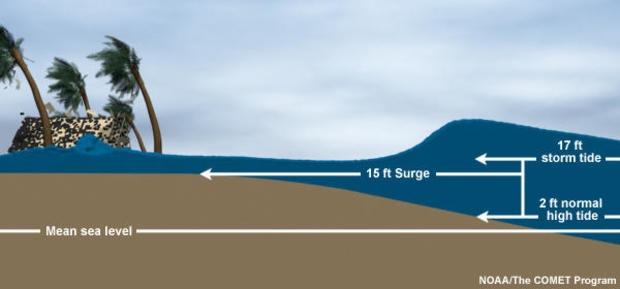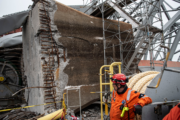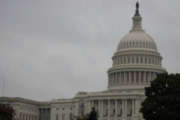▶ Watch Video: What is storm surge? Explaining one of a hurricane’s greatest dangers
One of the most dangerous and deadly hazards of a hurricane is the storm surge. The storm surge from Hurricane Ian caused major flooding in parts of Florida.
“Overwhelmingly, it’s been that surge that has been the biggest issue and the flooding … as a result of that,” Florida Gov. Ron DeSantis said following Ian’s landfall in southwest Florida Wednesday. Some areas saw up to 12 feet of water, he said.
About half of fatalities from hurricanes and tropical storms are due to the storm surge, according to the National Hurricane Center.
What is storm surge?
A storm surge is “an abnormal rise of water generated by a storm,” according to the NHC. As the storm moves toward the coast, water is pushed to the shore and “piles up,” creating the surge.
If a storm surge happens at the same time as high tide, water levels will be even higher. The combination of storm surge and the tide is known as storm tide.
Storm surge and rainfall both contribute to flooding during a hurricane.
 A 15-foot storm surge combines with a 2-foot high tide to make a 17-foot storm tide.
A 15-foot storm surge combines with a 2-foot high tide to make a 17-foot storm tide.
NOAA/The COMET Program
What factors contribute to storm surge?
The NHC says “storm surge is a very complex phenomenon” because it depends on a number of factors, including wind speeds, the forward speed of the storm, the storm’s size, the angle of approach to the coastline and the shape and characteristics of the coast.
Here’s a breakdown of some of the factors, per the NHC:
Intensity: Higher wind speeds generally mean more storm surge. However, even if a storm is lower on the Saffir-Simpson Hurricane Wind Scale, it can still cause devastating impacts.
Forward speed: A storm moving fast across the open ocean will generate more storm surge along the open coast, the NHC said. A slower storm can build up a “higher and broader storm surge inland.”
Size: Larger storms will generate more storm surge.
Angle of approach: A storm that perpendicularly hits the coast will have more storm surge than a storm that is parallel to the coast.
Width and slope of the continental shelf: Storm surge will likely be greater on a wide and shallow slope, such as the Louisiana coastline, than on a narrow and steep slope like the one along Miami Beach in Florida.
Hurricane Katrina, one of the most devastating storms in U.S. history, generated storm surge flooding of 25 to 28 feet above the normal tide level along parts of the Mississippi coast and 10 to 20 feet above normal tide along the southeastern Louisiana coast, the NHC said.
In 2008, parts of the Texas coast got storm surges of 15 to 20 feet above normal tide levels from Hurricane Ike, which was considered a Category 2 storm when it made landfall, according to the NHC.
What areas are at risk of storm surge?
Communities all along the U.S. East and Gulf Coasts are susceptible to storm surge. The NHC’s Storm Surge Risk Maps “make it clear that storm surge is not just a beachfront problem, with the risk of storm surge extending many miles inland from the immediate coastline in some areas,” the hurricane center said.
Risk maps are also provided for Puerto Rico, Hawaii and Southern California.







